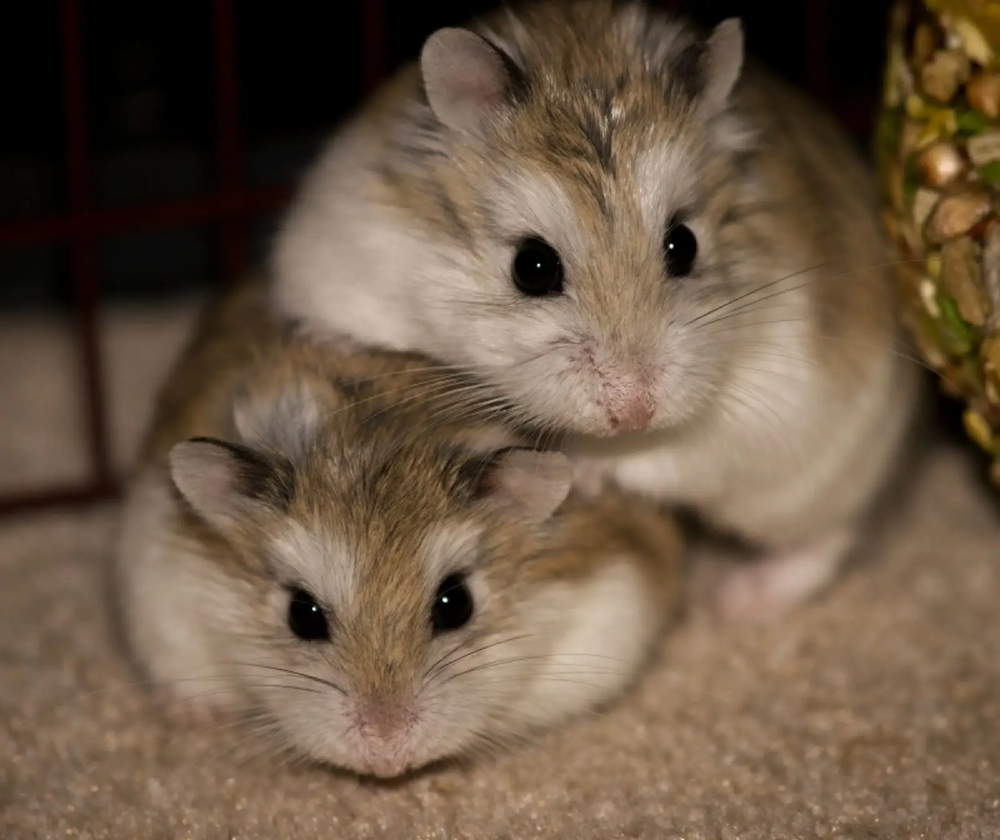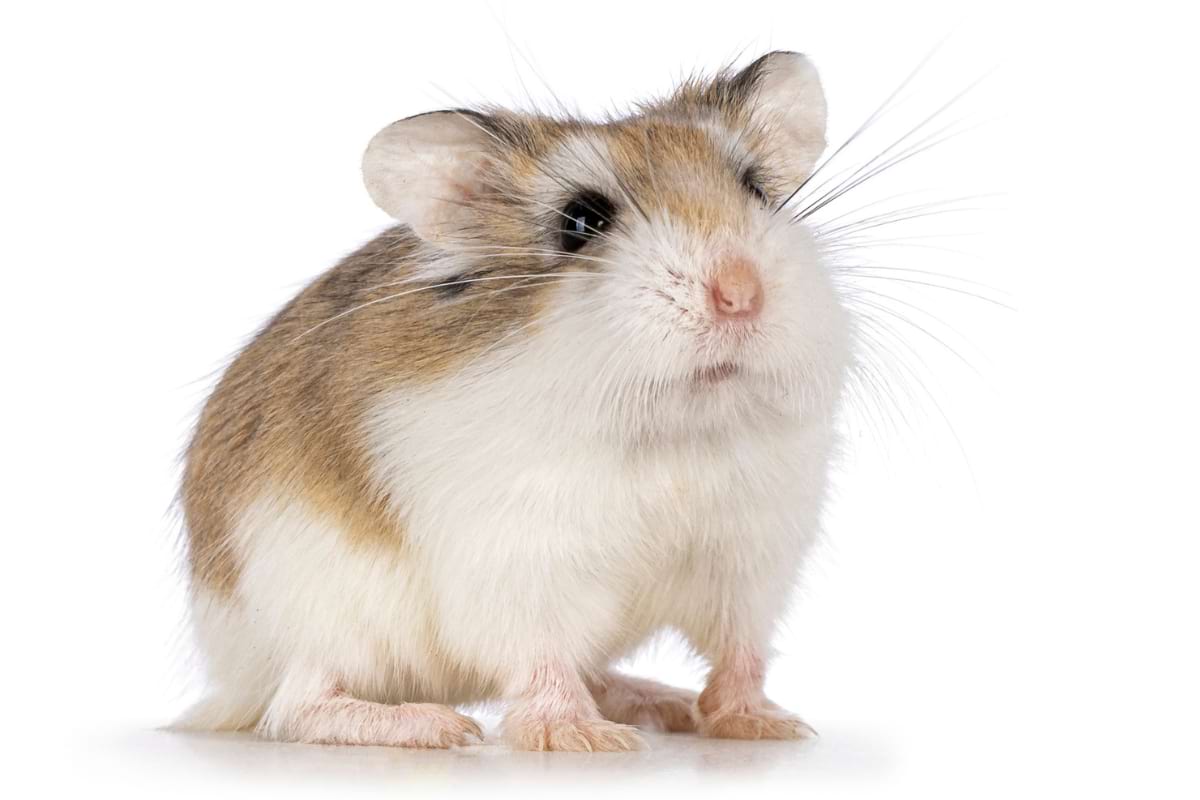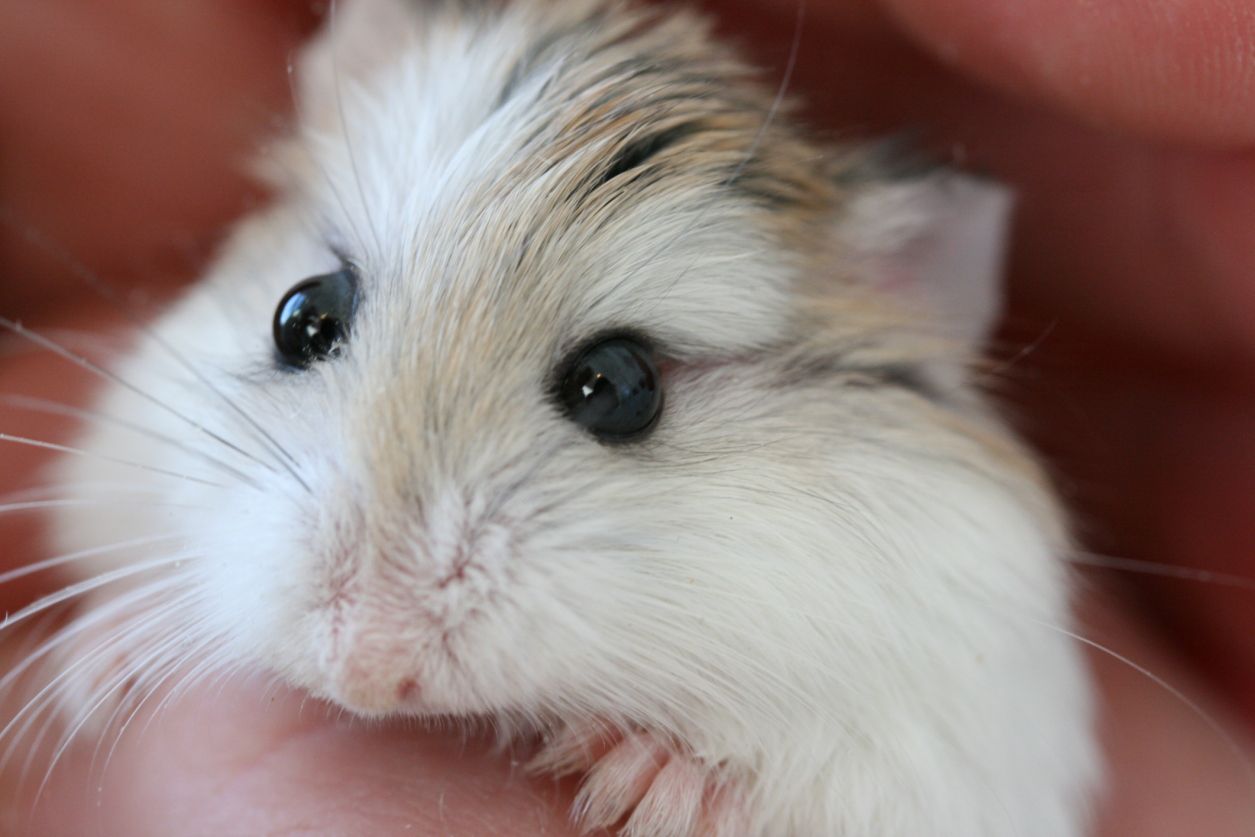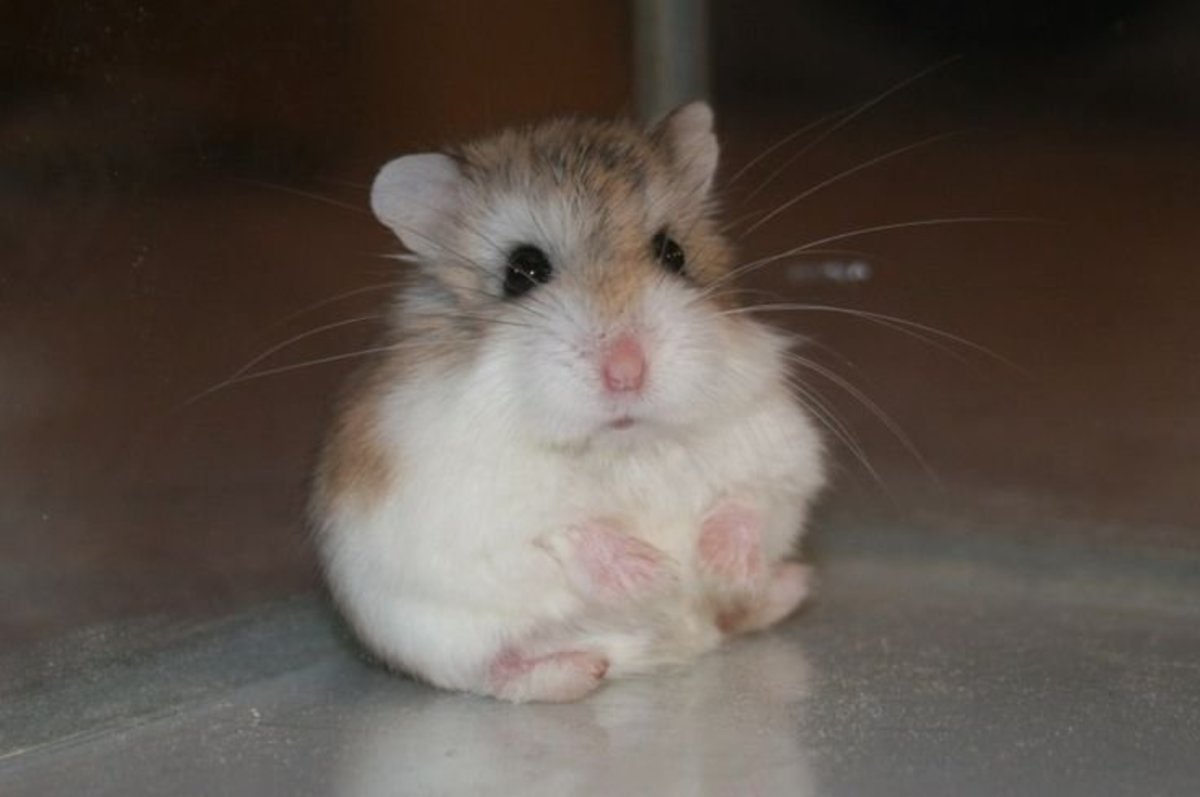If you’re considering adopting a pet and want something small, adorable, and full of energy, the Roborovski hamster (or Robo hamster) might be just the pet for you. These tiny, speedy creatures are the smallest species of dwarf hamsters, and while they’re not as cuddly as other breeds, they have unique personalities that make them a joy to care for. In this guide, I’ll walk you through everything you need to know about taking care of a Roborovski hamster, including their diet, habitat, behavior, and more.

What is a Roborovski Hamster?
Origin and Natural Habitat
Roborovski hamsters (Phodopus roborovskii) are native to the deserts of Central Asia, particularly found in parts of northern China, Mongolia, and Russia. Unlike other hamster species, Roborovskis are highly adapted to living in arid, harsh environments, making them resilient little creatures. In the wild, they live in burrows, away from the heat of the desert during the day, and are most active at dawn and dusk.
Physical Traits and Characteristics
Robo hamsters are the smallest of the dwarf hamster species, typically growing no longer than 2 inches. They have a compact, round body, with short legs and a slightly longer tail compared to other dwarf hamsters. Their fur is soft and dense, usually a sandy brown on top with a white belly. A distinctive feature is their lack of the dorsal stripe that’s common in other dwarf hamsters, which gives them a cleaner, sleeker appearance.
Common Names and Species Overview
Commonly referred to as “Robo hamsters” due to their scientific name, Roborovskis are known for their quickness. They’re the speedsters of the hamster world, often darting around their cage at lightning speed. While they may not be the best choice if you’re looking for a cuddly, hand-tame pet, they are fascinating to watch and provide endless entertainment.

Setting Up the Perfect Roborovski Hamster Habitat
Ideal Cage Size and Type
Despite their small size, Roborovski hamsters are extremely active and need plenty of space to run and explore. A minimum cage size of 24 inches by 12 inches is recommended, though the bigger, the better. They can live in wire cages, plastic modular setups, or glass tanks. Wire cages offer excellent ventilation, but be cautious of the bar spacing—Robo hamsters can squeeze through gaps as small as half an inch, so make sure the bars are close together.
Best Bedding Options for Roborovski Hamsters
Robos love to burrow, so choosing the right bedding is important. Opt for safe bedding materials like aspen shavings or paper-based bedding, which are gentle on their tiny paws and allow them to dig tunnels. Avoid cedar or pine shavings, as these can cause respiratory problems. Aim to provide a bedding depth of at least 4-6 inches to encourage their natural burrowing behavior.
Hamster Wheels and Other Exercise Essentials
Since Robo hamsters are incredibly active, a hamster wheel is an absolute necessity. Look for a wheel that’s at least 6 inches in diameter, with a solid surface to prevent their feet from getting caught in rungs. Along with a wheel, provide other exercise toys like tunnels, climbing platforms, and even a hamster ball for out-of-cage exploration (under supervision, of course).
Temperature and Lighting Requirements
Roborovski hamsters thrive in temperatures between 65°F and 75°F. Keep their cage away from direct sunlight, drafts, or cold spots in the house. Robos are crepuscular, meaning they’re most active during dawn and dusk, so it’s essential to maintain a natural lighting schedule for them. Avoid keeping them in overly bright environments or rooms with a lot of noise and traffic.

Understanding Roborovski Hamster Diet and Nutrition
Best Foods for Roborovski Hamsters
A healthy diet is the cornerstone of a happy hamster. Robos should be fed a balanced diet consisting of high-quality commercial hamster food, which provides the right mix of seeds, grains, and pellets. Brands like Kaytee and Oxbow offer excellent nutritional profiles for dwarf hamsters. Additionally, you can supplement their diet with small amounts of fresh vegetables such as carrots, cucumbers, and spinach.
Fresh Vegetables, Treats, and Safe Foods
While commercial food should make up the bulk of their diet, treats like fresh veggies and the occasional fruit (apple slices, blueberries) can be offered in moderation. Robos also enjoy protein-rich treats such as mealworms or cooked egg. Always remove any uneaten fresh food within a few hours to avoid spoilage.
Foods to Avoid
Certain foods are toxic to hamsters and should be avoided at all costs. Steer clear of citrus fruits, garlic, onions, raw beans, chocolate, and anything sugary. Dwarf hamsters are especially prone to diabetes, so it’s crucial to limit sugary snacks.

Roborovski Hamster Behavior and Personality
Typical Roborovski Hamster Traits
Roborovski hamsters are known for being fast, skittish, and less prone to taming than other hamster species. They are extremely active, often running on their wheel for hours, and they love exploring their habitat. While they may not enjoy being handled as much as Syrian hamsters, they’re still very playful and curious by nature. Their small size and speed can make them tricky to catch, so they’re best for owners who enjoy observing rather than handling.
How to Handle and Bond with Your Hamster
If you want to bond with your Roborovski hamster, patience is key. Start by letting them get used to your presence; spend time near their cage and talk to them softly. Over time, you can offer treats from your hand to build trust. When they’re comfortable, gently scoop them up using both hands, keeping them close to the ground in case they decide to make a quick getaway. Be mindful that Robos are less fond of handling than other hamsters, so respect their boundaries.
Common Behavioral Issues and Solutions
Due to their fast nature, some owners may find it challenging to interact with their Roborovski hamsters. However, this doesn’t mean they’re unfriendly. Providing them with plenty of enrichment in their cage—like tunnels, hideaways, and chew toys—can help satisfy their need for exploration. If your Robo is biting, it’s usually a sign they feel threatened or stressed. Give them time to adjust to their environment and handle them with care.

Health and Lifespan of Roborovski Hamsters
Common Health Problems in Roborovski Hamsters
While Roborovski hamsters are generally hardy, they can be prone to certain health issues. One of the most common is wet tail, a serious gastrointestinal condition. Other potential health problems include respiratory infections, dental issues, and injuries from falling or getting stuck in small gaps. Regular cleaning of their habitat, a balanced diet, and monitoring for signs of illness (such as lethargy or a lack of appetite) are essential for preventing health issues.
How to Keep Your Hamster Healthy
Keeping your Roborovski hamster healthy involves maintaining a clean and safe living environment. Spot-clean the cage regularly and do a full bedding change once a week. Make sure your hamster gets plenty of exercise with a hamster wheel and toys, and provide fresh food and water daily. If you notice any signs of illness, consult a vet experienced with small animals right away.
What to Expect as Your Hamster Ages
Roborovski hamsters typically live for 2 to 3 years. As they age, you may notice them slowing down and becoming less active. It’s important to adjust their environment accordingly, making it easier for them to access food and water. Senior hamsters may also need softer foods or additional warmth in their habitat.
How to Keep Your Roborovski Hamster Entertained
Enrichment Ideas and Toys
Keeping a Roborovski hamster entertained is easy with the right setup. They love tunnels, hideaways, and chew toys that allow them to engage in their natural behaviors. Puzzle toys, where you can hide treats, are also great for mental stimulation. Try switching out their toys regularly to keep things fresh and exciting for them.
Best Hamster Toys for Mental and Physical Stimulation
Robos need both mental and physical stimulation to stay happy. Provide a variety of toys, including wooden chew sticks, cardboard tubes, and even small mazes for them to explore. Adding platforms and ladders will allow them to climb and explore their vertical space, which can help mimic their natural environment.

Where to Buy a Roborovski Hamster
Choosing a Reputable Breeder
If you’re considering getting a Roborovski hamster, it’s important to find a reputable breeder who prioritizes the health and well-being of their animals. A good breeder will be able to provide you with the hamster’s health history and offer advice on proper care.
Pet Stores vs. Breeders: Pros and Cons
Many people choose to purchase their hamsters from pet stores like PetSmart or Petco. While convenient, it’s essential to check the conditions in which the hamsters are kept, as they can sometimes come from large-scale breeders or mills. Breeders, on the other hand, often have better control over the health and socialization of their animals, but they may be harder to find.
Adopting Roborovski Hamsters from Rescues
Another great option is adopting a Roborovski hamster from a rescue or shelter. Many small animal rescues often have hamsters that need loving homes. Adopting is a wonderful way to give a hamster a second chance at a happy life.
Final Thoughts on Roborovski Hamster Care
Roborovski hamsters are fascinating, energetic little creatures that can bring a lot of joy to your life. While they require specific care due to their size and speed, their quirky personalities make them a rewarding pet to watch and care for. With the right habitat, diet, and attention, your Robo hamster will live a happy and healthy life. Remember, the key to success with these tiny pets is patience, respect for their boundaries, and providing them with plenty of enrichment.
FAQs
- How long do Roborovski hamsters live?
Roborovski hamsters typically live for 2 to 3 years, although some may live longer with proper care. - Can Roborovski hamsters be kept with other hamsters?
While they are more social than other hamster species, it’s still recommended to house them individually to prevent fights. - What should I feed my Roborovski hamster?
A balanced diet of hamster pellets, seeds, and fresh vegetables is best. Avoid sugary foods, as Roborovskis are prone to diabetes. - How can I tell if my Roborovski hamster is happy?
A happy hamster will be active, curious, and show normal eating and grooming habits.

